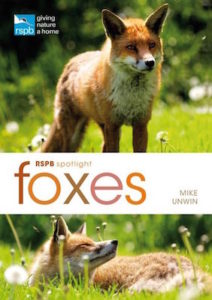The sound is like nothing else on earth.
I was sound asleep, breathing in the fresh, clean air of the Berkshire countryside that drifted into my room through an open window near the bed, when I was jerked into consciousness by what I at first thought was a woman screaming. As I lay there in the dark, asking myself just what it was that I heard, another scream burst through the midnight silence, followed quickly by two more. By that time it was clear to me that it wasn’t a human scream, but for the life of me I couldn’t find anything in my brain to which it might be connected. More mammalian than avian, I finally drifted back off to sleep after some time, puzzling over the just what it might have been.
It was a fox – a Red Fox, Vulpes vulpes to be precise.
All those to whom I described the sound the next morning identified it immediately. Some said they found it unnerving; frightening even. Others thought it to be an integral part of the background to life in the English countryside. As for me, growing up in the Pacific Northwest where Gray Fox, Urocyon cineroargenteus, are far more common than Red Fox, it was my first encounter – albeit only auditory – with one.
Mike Unwin, on the other hand, is very familiar with foxes; a fact that is clearly evident in his recently published RSPB Spotlight: Foxes. Focusing on the type species, the Red Fox so familiar in both lore and life to those living in the United Kingdom – and indeed throughout the largest natural range of any mammal other than those bizarre hominids classified as Homo sapiens – Unwin takes the reader on a fascinating tour of one of the world’s most intriguing carnivores.
A canid (dog) by classification, but of the genus Vulpes (true foxes) rather than the more familiar Canis – the genus to which our beloved household Canis lupus familiaris belongs – the Red Fox (or more simply, just the Fox in the U.K.), like the eleven other true fox species, shares a remarkable number of similarities with cats. Indeed, as Unwin so well phrases it, the Red Fox is “a dog with cat delusions.”
Yet these “delusions” are well founded. Unlike the round eye pupils of other canids, true foxes have pupils that are vertical ovals similar to those of cats, which allow much more effective management of available light in dim conditions. Being primarily solitary (also like cats), rather than hunting in packs as most canines do, foxes employ some very feline hunting techniques, including a belly-crawling stalk and the “mousing pounce” so familiar to anyone who has ever watched a domestic cat hunting mice or voles in a field (in fact, foxes sometimes even “play” with their catch, tossing it up in the air and catching it multiple times before finally devouring it). Foxes even sleep with their tails curled around them. Yet make no mistake, they are unquestionably canids. As Unwin well explains, these feline traits are the result of the species inhabiting an ecological position in its habitat areas that would more commonly be filled by a cats.
Ranging throughout both the wilds and the urban areas of North America, Europe, Asia, the Middle East, few northern part of Africa, and – due to an unfortunate introduction by homesick British fox-hunting enthusiasts, Australia, the Red Fox has proven itself to be a remarkably adaptable creature. Aided by its relatively small physical size and wide-ranging diet (unlike cats, which are obligate carnivores who must eat meat to obtain the nutrition levels they require, the Red Fox is a facultative carnivore – it prefers meat but can and will also readily eat a large number of other things as well), it has proven itself highly adaptable to a wide variety of locations, including life near human habitation.
And through living so effectively near humans for so long, the Red Fox has worked itself into the folklore of many of the peoples around whom it has made its home. Often viewed as the crafty villain due and unfairly burdened with a number of unsavory human characteristics (such as malice and wastefulness) that Unwin takes great pains rightly to point out are impossible for it to possess, the Red Fox has become a cornerstone character in legends and lore going back to Aesop.
Through his thorough yet brisk narrative, and with the aide of dozens of illustrative as well as beautiful photographs, Unwin covers all this and more, leading the reader to a thorough understanding of the Red Fox, its relationship to its true fox cousins, its life history, and its existence in and adaptation to the modern world. Written at a level that welcomes those with no previous significant knowledge of foxes – or even mammalian biology for that matter – yet easily holds the attention of more experienced naturalists, RSPB Spotlight: Foxes provides a superb overview of a remarkable creature that many of us may very well live in close proximity to but few of us – before reading this book, at least – can likely claim to know well.
 Title: RSPB Spotlight: Foxes
Title: RSPB Spotlight: Foxes
Author: Mike Unwin
Publisher: Bloomsbury
Imprint: Bloomsbury Natural History
Series: RSPB
Published: 25 August 2015
Format: Paperback
Pages: 128 pp.
ISBN: 9781472912091
In accordance with Federal Trade Commission 16 CFR Part 255, it is disclosed that the copy of the book read in order to produce this review was provided gratis to the reviewer by the publisher.
If you enjoyed reading this, please consider signing up for The Well-read Naturalist's newsletter. You'll receive a helpful list of recently published reviews, short essays, and notes about books in your e-mail inbox once each fortnight.
